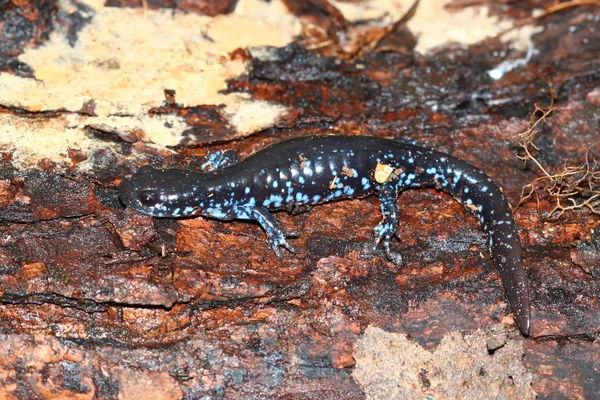Introduction
Blue axolotls have taken the pet world by storm, captivating enthusiasts with their rare and stunning appearance. Whether you’re new to the axolotl hobby or you’re considering adopting one, understanding what makes the blue axolotl unique is essential. This guide explores the fascinating world of blue axolotls, including their genetics, care requirements, and what you need to know before bringing one into your home.

Blue Axolotl’s Physical Features
Axolotls are known for their striking, unique features. While they are typically a dull brown or grey, the blue axolotl is a true showstopper. These creatures possess a vibrant blue hue, which makes them stand out from their traditional counterparts. The blue axolotl’s color is a result of a genetic mutation, giving it an almost mystical appearance.
These axolotls feature the same external gills, wide-set eyes, and fringed body that are characteristic of the species, but their blue color provides them with an entirely different aesthetic appeal. The blue axolotl may have a subtle metallic sheen, which makes it even more eye-catching in both natural and artificial light.
Genetics and Color Variations
Blue axolotls are the result of selective breeding, often stemming from a genetic mutation known as the "melanin mutation." This mutation affects the pigments in their skin, resulting in their striking blue color. While natural axolotls have a variety of colors, including wild-type brown and leucistic (pale pink), the blue axolotl is rarer and often sought after for its beauty.
The blue coloration comes from a mix of recessive genes and may sometimes be referred to as "Mosaic" or “Golden Albino” variations, depending on the specific genes that are expressed. It's important to note that the blue axolotl's color can vary in intensity, with some individuals having a more vibrant blue than others. The rarest and most prized blue axolotls tend to exhibit an intense blue color with minimal variation.
Comprehensive Care Tips for Blue Axolotls
Caring for a blue axolotl requires attention to detail and a suitable environment to ensure they thrive. Here are some key care tips for keeping your blue axolotl healthy:
Water Quality: Axolotls are aquatic creatures, and their health depends on clean water. Regular water changes (20-30% every week) and proper filtration are essential. The water temperature should be kept between 60°F and 64°F (16°C to 18°C), as they prefer cool water.
Tank Size and Setup: A tank of at least 20 gallons is recommended for a single axolotl, with more space for additional individuals. A soft substrate, such as sand or bare-bottomed tanks, will reduce the risk of ingestion, which could harm their delicate digestive system.
Diet: Blue axolotls are carnivorous and require a diet rich in protein. Suitable foods include live or frozen earthworms, bloodworms, and specially formulated axolotl pellets. Feed them once or twice a day, ensuring the food is appropriate for their size and age.
Lighting and Environment: Axolotls are nocturnal, so bright lighting is not necessary. Providing a dimly lit environment will help them feel secure. Also, ensure there are plenty of hiding spots like rocks or plants where they can retreat.
Health Considerations: Blue axolotls are generally hardy, but they can be susceptible to fungal infections or waterborne diseases. Keep an eye out for signs of distress, such as reduced appetite, abnormal swimming patterns, or skin lesions.
Breeding Blue Axolotls
Breeding blue axolotls can be a rewarding experience for dedicated axolotl enthusiasts. However, breeding requires specific conditions to be met:
Temperature Control: Lowering the water temperature to around 60°F (16°C) can trigger the breeding process in axolotls.
Male and Female Pairing: Select healthy adults with good genetics. A female axolotl will lay eggs that a male will fertilize externally.
Egg Care: Once fertilized, axolotl eggs should be kept in a separate tank to prevent cannibalism by adult axolotls. The eggs typically hatch in 2-3 weeks.
Cost and Where to Buy Blue Axolotls
The price of a blue axolotl can vary based on factors such as its color intensity, age, and whether it’s a wild-caught or captive-bred specimen. On average, blue axolotls can range from $100 to $500. Captive-bred axolotls are generally preferred because they are healthier and more sustainable.
To purchase a blue axolotl, you can find reputable breeders through online platforms, pet stores, or specialty axolotl forums. Ensure that you are buying from a source that guarantees the axolotl's health and provides proper care instructions.
Conclusion
Blue axolotls are one of the most beautiful and unique pets you can own, but they require a commitment to their care and well-being. By understanding their genetics, providing the right environment, and following the necessary care guidelines, you can enjoy the company of these fascinating creatures for many years.
Before bringing a blue axolotl into your home, make sure you are fully prepared to meet their needs. By doing so, you’ll be rewarded with a stunning and low-maintenance pet that thrives in your care.
引用1: For detailed care and breeding information, refer to Axolotl.org, a leading resource for axolotl enthusiasts (Axolotl.org, 2024).
引用2: The Spruce Pets offers an in-depth guide on axolotl care, including habitat setup and feeding (The Spruce Pets, 2024).
引用3: National Geographic provides fascinating insights into axolotl biology and their regenerative abilities (National Geographic, 2024).
animal tags: blue-axolotl
We created this article in conjunction with AI technology, then made sure it was fact-checked and edited by a Animals Top editor.